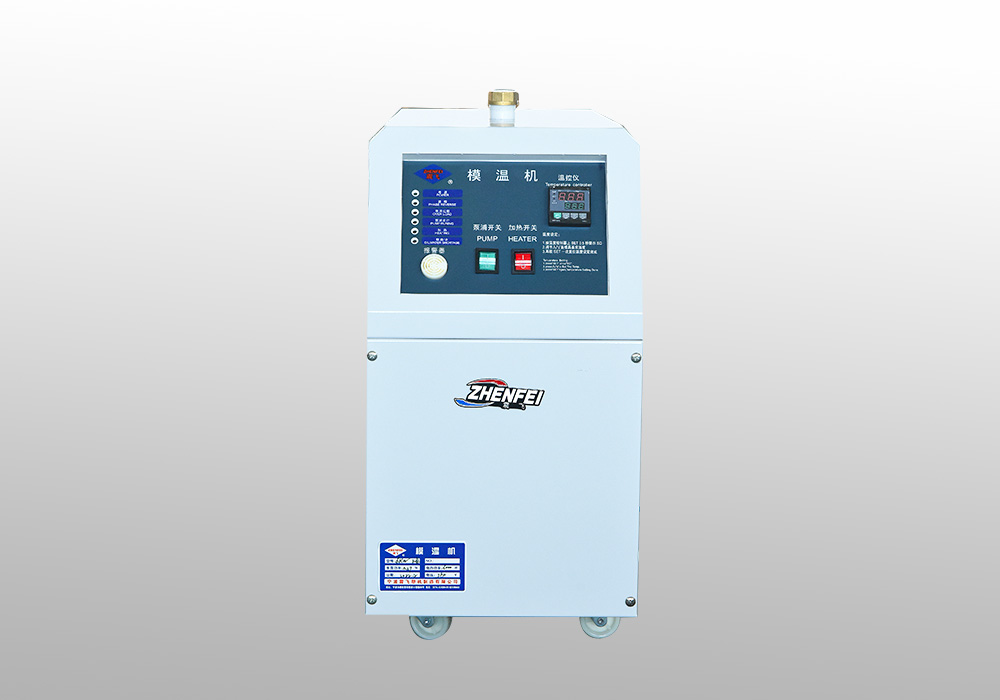Date:Sep 29, 2025
In modern manufacturing, automatic mould temperature control machines are key equipment for improving production efficiency and ensuring product quality. Choosing the right temperature control machine can be a complex and challenging decision for many manufacturers. Different production processes, mould materials, and temperature control requirements all dictate the type and performance of the equipment.
Different production processes require different temperature control ranges. For instance, in plastic injection molding, the mould temperature needs to be kept within a high range to ensure the fluidity of the plastic and the cooling rate of the mould. For metal casting or other high-precision processes, the mould temperature is usually kept at a lower range. Therefore, when choosing a temperature control machine, it is important to first determine the required temperature control range based on your process requirements.

Generally, the typical temperature ranges for common processes are as follows:
| Application Area | Temperature Range (°C) |
|---|---|
| Plastic Injection Molding | 20°C - 120°C |
| Metal Casting | 50°C - 200°C |
| Mould Cooling | 5°C - 50°C |
It is important to note that machines with a larger temperature range tend to offer more flexibility, but if the temperature range does not match the actual requirements, it may lead to unnecessary resource wastage and inefficiency.
High-precision temperature control machines are able to maintain minimal temperature fluctuations. For products with strict temperature requirements (such as electronic components and precision plastic parts), temperature control precision is crucial. If the temperature control machine cannot provide adequate precision, it may lead to product quality issues and negatively affect overall production efficiency.
Temperature control precision is typically categorized as follows:
When selecting, it is important to choose a machine based on your production needs and product precision requirements.
With increasing global focus on environmental protection and energy saving, manufacturers are placing higher demands on the energy efficiency of temperature control machines. Choosing an energy-efficient machine not only reduces energy consumption but also lowers operational costs. Below are several factors to consider when choosing an energy-efficient temperature control machine:
The heat exchange efficiency determines how effectively the machine utilizes energy. If the heat exchanger is poorly designed, it may lead to energy waste and increased operational costs. A high-efficiency heat exchanger can transfer heat from the heat source to the cooling medium in a short time, thus minimizing energy waste.
Some advanced automatic mould temperature control machines are equipped with intelligent energy-saving features. These machines automatically adjust the temperature settings based on the production process requirements, thus avoiding unnecessary over-heating. Energy-saving modes can reduce energy consumption while maintaining product quality.
For example, in some injection molding processes, the temperature control machine can automatically detect changes in cooling demands and adjust the mould temperature accordingly, preventing energy waste caused by excessive heating or cooling.
Automatic mould temperature control machines typically operate under high-temperature, high-pressure, and high-load conditions. Therefore, the stability and durability of the equipment are critical. When choosing a machine, you should first consider equipment that uses high-quality materials, especially for the heat exchanger, pump system, and pipeline components. These parts must be able to withstand high temperatures and pressures to avoid equipment downtime caused by overheating or damage.
Common Heat-Resistant Materials:
The pump system and pipeline design of the temperature control machine should also be closely monitored. If the pump system malfunctions during long-term operation, it can prevent accurate temperature control of the mould, which in turn affects production efficiency. Therefore, you should prioritize equipment with high reliability and low failure rates.
Modern automatic mould temperature control machines are often equipped with digital control panels or touch screens. These interfaces are simple and intuitive, making it easier for users to set and monitor temperature control parameters. A clear and easy-to-read display allows operators to quickly access critical information such as the machine’s operating status, temperature fluctuations, and energy consumption.
Ideal user interfaces should have the following features:
Some advanced temperature control machines come with automatic diagnostic systems. These systems can detect faults during operation and issue early warnings. This feature allows operators to make adjustments and perform maintenance in a timely manner, avoiding production interruptions.
For maintenance, designs that facilitate easy cleaning and part replacement will significantly reduce maintenance costs and downtime. When selecting, prioritize machines with modular designs, as these simplify the repair process and shorten downtime.
The quality of after-sales service directly affects long-term operations. Temperature control machines are prone to faults during long-term operation, so it is essential to consider the warranty period and the repair services provided by the manufacturer. Good after-sales service ensures that manufacturers can quickly resolve equipment issues, minimizing downtime.
When choosing equipment, the manufacturer’s technical support capabilities are also critical. A professional technical support team can respond promptly to customer needs and provide necessary guidance and maintenance support. Ensuring the normal operation of the equipment will help prevent production inefficiencies due to technical problems.
Recommended Articles